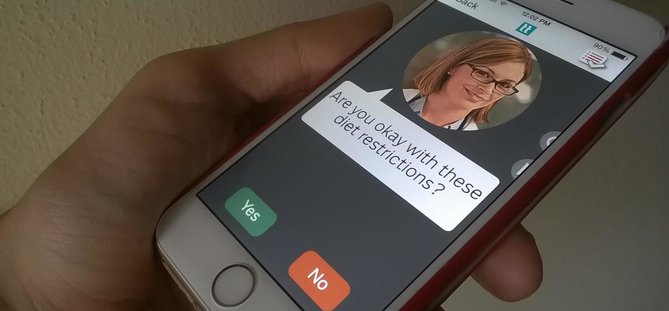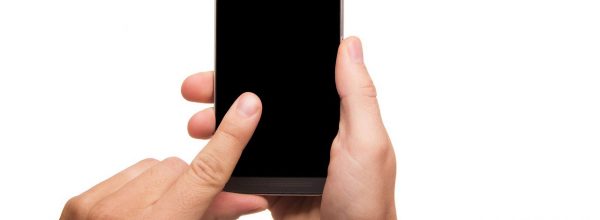A version of this article originally appeared in Healthcare Innovation News.
Healthcare has long lagged behind other industries in adopting digital technologies. But today innovative startups and forward-looking companies are working to help healthcare catch up, creating new digital solutions to make care more convenient and more personalized. However, many of these solutions are being designed for the educated and tech savvy—apps on the latest technology platforms, such as the iPhone or Android. These can be valuable for a specific niche of the population, but they highlight a problem that has emerged over the last 10 years: these digital technologies do not address the needs of populations who could benefit the most—the chronically ill and vulnerable who are traditionally underserved by the U.S. healthcare system.
On the whole, smartphone ownership is increasing rapidly. The Pew Research Center’s Internet & American Life Project found in 2013 that 56% of all American adults now own a smartphone. But these numbers tell a different story when broken down by age and income. For those who make less than $30,000 per year, only those younger than 30 are likely to own a smartphone. And for low-income patients over 65, who are more likely to have complex and expensive health needs, fewer than 10% have smartphones.1 That means if solutions are designed to only work on smartphones, they aren’t reaching the patients with the biggest health challenges.
Even if low-income smartphone ownership catches up in five or 10 years, patients can’t wait that long. They need solutions that tackle the unmet needs of the most vulnerable. Healthcare reform has opened the door to millions of newly insured people, and they need solutions that work for everyone, not just the wealthy and tech-savvy.
The inequities in technology access are not likely to go away any time soon. In the past, there have been digital divides in owning a home computer, having a cell phone and in Internet access. Now the same trend is occurring around access to smartphones and tablets. The divide will carry onto the next platform, and the next after that. But technology isn’t the real issue. The bigger question is whether innovators are building solutions that work for the underserved, vulnerable and chronically ill in our society.
This is already playing out in the much-hyped wearables industry. In an article for WIRED,2 J.C. Herz criticizes companies that are dumping vast amounts of money and effort into fitness trackers for the healthy and well-off, while largely neglecting the huge need (and market potential) of those living with chronic diseases and other complex medical conditions. Chronically ill and disabled populations, who together account for $634.7 billion in health spending each year,3 often need to track various aspects of their health in order to manage their condition and stay out of the hospital.
But as Herz points out, the darling of the recent Wearables + Things conference was not a device to help complex patients, or even a fitness tracker. It was “Dorothy,” a shoe clip that calls Uber when wearers click their heels together three times.4
Herz speculates that developers are hesitant to wade into the murky regulatory waters that surround healthcare. Compounding that is an empathy gap: The young engineers designing the next generation of wearable tech have more friends training for half-marathons than managing diabetes. One way or another, there is a disconnect between the problems of those who need the most help and the tech solutions they are being offered. If America’s healthcare system is going to transform to achieve the triple aim, tech innovators need to focus on understanding and designing for the unique needs of vulnerable patients.
So call this the classic disruptive innovation pitch. There is an untapped market, and the way to access it is to build products that are cheaper, more accessible and more useful to a wider population beyond early adopters. This strategy, defined for a generation by Clayton Christensen’s “The Innovator’s Dilemma”5 applies to finding solutions for the underserved—just as it did to building personal computers or cheaper steel.
There is a huge market opportunity in the safety net, a collection of organizations that serve those with low incomes, the uninsured and those enrolled in public programs. These organizations include free clinics, federally qualified health centers (FQHCs), public hospitals and other organizations that care for people regardless of their ability to pay. The safety net serves approximately three out of every 10 Californians—that’s 7.6 million people.6
Safety net patients are diverse, but tend to be people who are not well integrated into the healthcare system for economic, geographic and/or cultural reasons. Many are immigrants or live in rural areas far from comprehensive medical facilities. They usually have low incomes, with little extra money to spend on non-essentials. And they have chaotic lives, caring for their families and working long hours for little pay. Activities that seem routine—keeping clinic appointments, filling and refilling prescriptions, returning for test results or follow-up visits, not to mention eating right and exercising—can be dishearteningly difficult for safety net patients. They may have trouble accessing transportation, taking time off work, finding childcare, affording co-payments or navigating a healthcare system that feels alien to them, in a language that may not be their first.
The irony is that for these patients, the right technology solution can make a huge impact on the quality of care they can access. Health technologies that allow more convenient and more flexible access to doctors are even more potent in the hands of the underserved than they are in the hands of the affluent. It’s not just a difference in convenience or design elegance, but a difference that’s transformative, that helps them be healthier and improves their lives. The 3.4 million people entering the healthcare system in California alone7 could use some real innovation. Demand for services is increasing. Complexity of patients in the safety net is growing. There are huge needs for better care coordination and lower costs. This is not just a market to tap; this is an opportunity to make an impact in the lives of the people who need it most.
To do this, innovators should develop simple solutions that meet patients where they are and work within their reality. These should be innovations that take into account the unique needs of characteristics of safety net patients. Interventions should be designed with non-English speakers in mind, and need to be accessible at low literacy levels. They should be affordable and take into account difficulties vulnerable patients have accessing services and healthy food. Interventions have to immediately add value because these families are usually too busy to adopt technologies that don’t make a difference right away.
Meanwhile, safety net clinics and provides need solutions without bells and whistles that deliver meaningful improvements at a price point that resource-tight organizations can afford—or with a clear business case already determined. They need to be easily integrated into existing systems, or they should not require integration at all. Good solutions make providers’ lives simpler, not more complicated, and that means they need to be user friendly for both patients and providers. The key is to start with needs. By cultivating empathy for the underserved and by learning about the challenges they face, the right technology solutions can make a big impact on the lives of those who need the most help and go further toward building a healthcare system that is robust, sustainable and effective for everyone.
References:
1 Smith A. “Smartphone Ownership 2013.” Pew Research Internet Project. Pew Research Center. June 2013.
2 Herz JC. “Wearables Are Totally Failing the People Who Need Them Most.” WIRED. November 2014.
3 Holahan J, Schoen K, McMorrow S. “The Potential Savings From Enhanced Chronic Care Management Policies.” Health Policy Institute. November 2011.
4 Herz JC. “Wearables Are Totally Failing the People Who Need Them Most.” WIRED. November 2014.
5 Christensen C. The Innovator’s Dilemma: When New Technologies Cause Great Firms to Fail. Harvard Business Review Press; first edition. May 1, 1997.
6 California Department of Health Care Services.
7 DiJulio B, Firth J, Levitt L, et al. “Where Are California’s Uninsured Now? Wave 2 of the Kaiser Family Foundation California Longitudinal Panel Survey.” The Henry J. Kaiser Family Foundation. July 2014.


